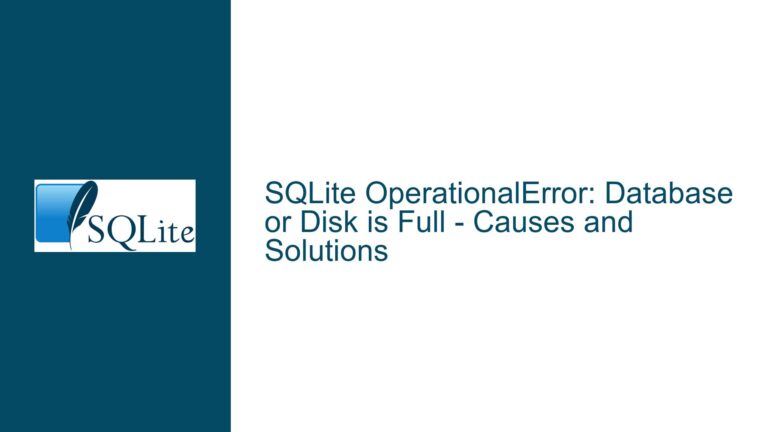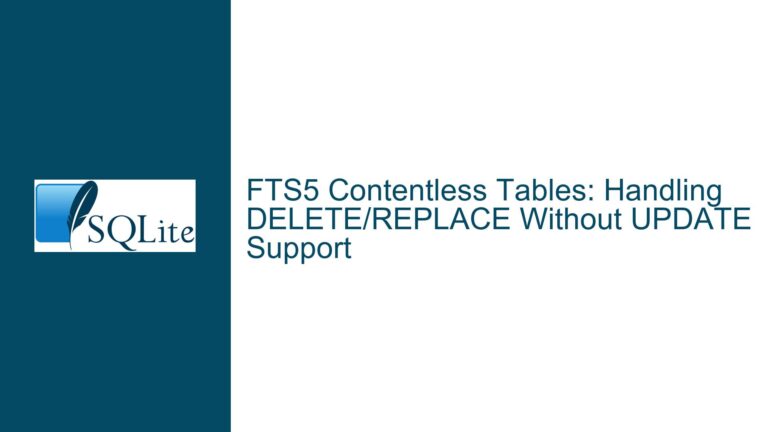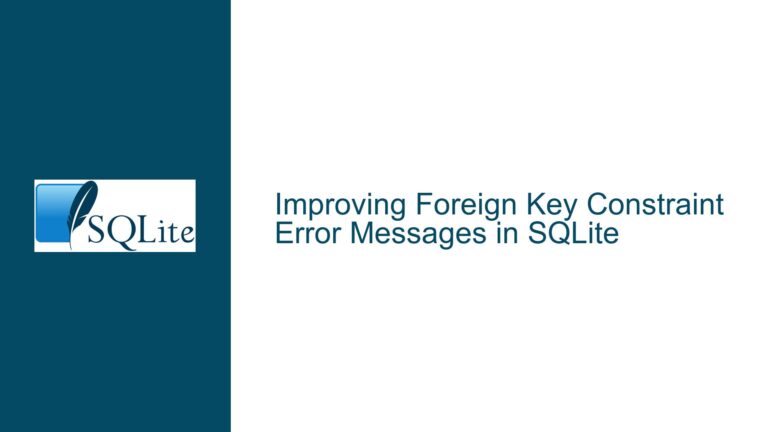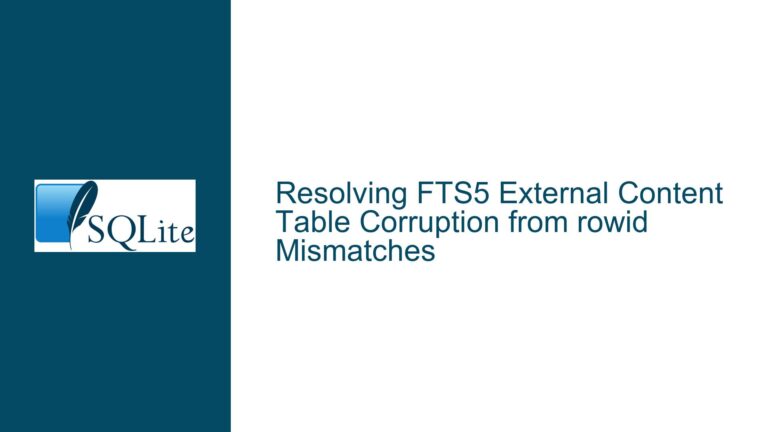SQLite OperationalError: Database or Disk is Full – Causes and Solutions
Understanding the "Database or Disk is Full" Error in SQLite The "database or disk is full" error in SQLite is a common yet often misunderstood issue that can arise during database operations. This error message is typically straightforward in its indication: the system is unable to allocate the necessary space for the operation being performed….









